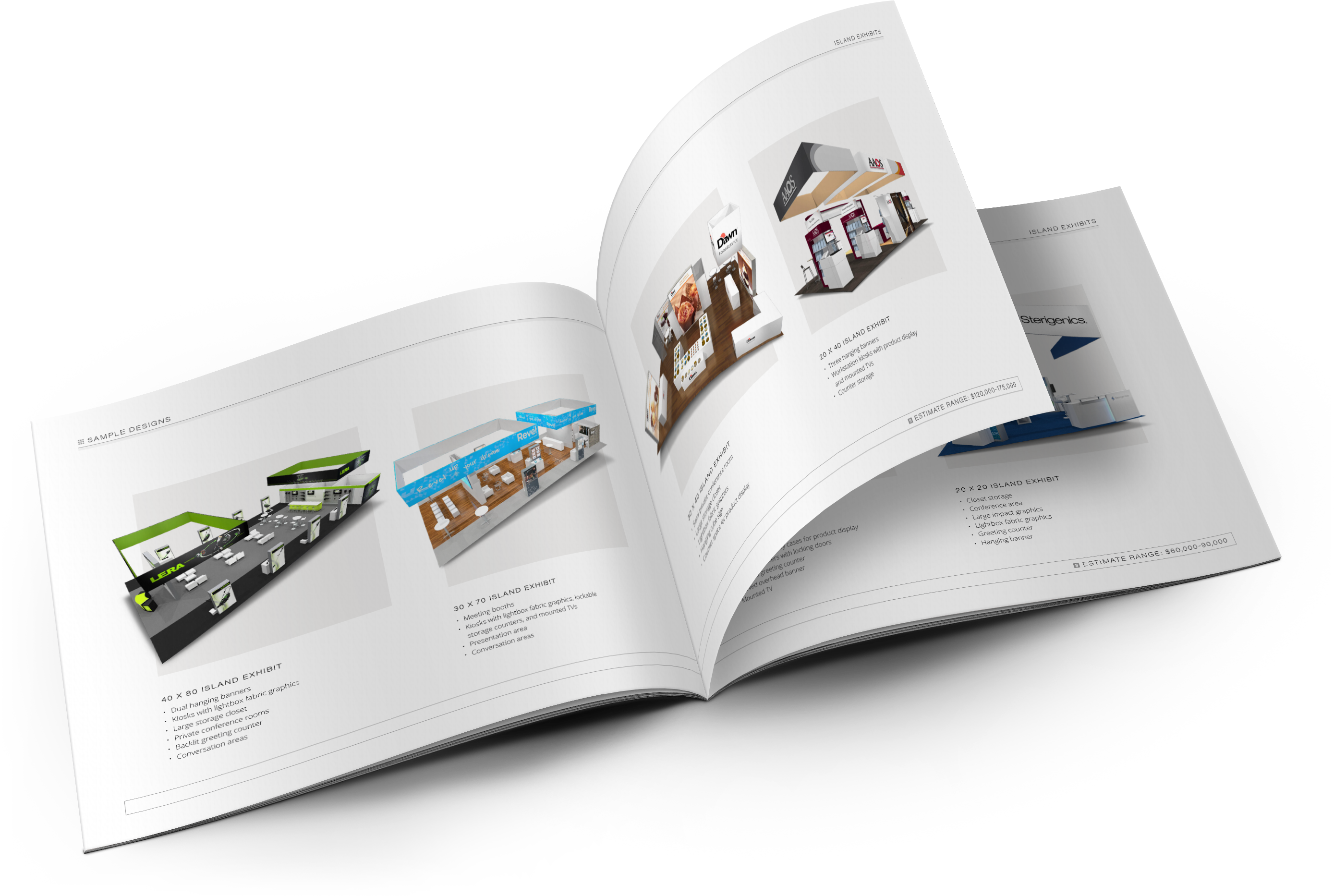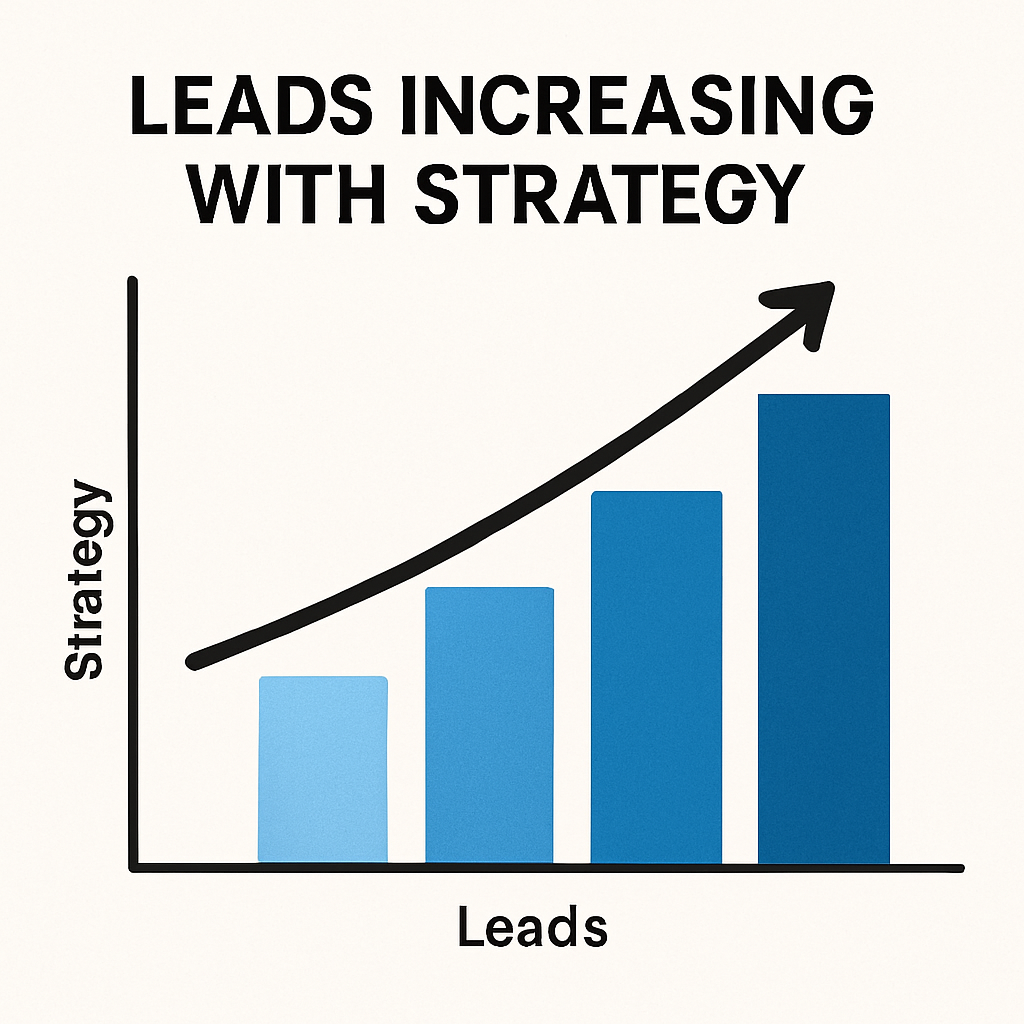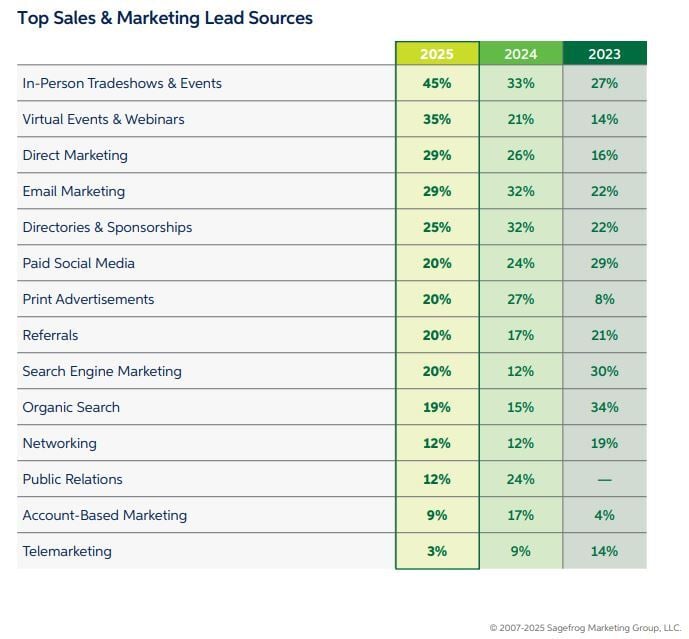Your success at a trade show largely hinges on the clarity and precision of your goals, which fundamentally define the purpose of your attendance at the event. Are you participating to write orders and directly generate sales, aiming to boost your revenue and expand your market share? Perhaps your focus is on developing a robust pipeline of new prospects, seeking to establish connections that could lead to future business opportunities and long-term partnerships. Alternatively, is your primary objective to generate awareness for your brand, striving to enhance your visibility and strengthen your brand identity in the industry? For each of these objectives, it is crucial to set specific, measurable goals that will guide your efforts and allow you to evaluate your success. By clearly defining what you aim to achieve, you can tailor your strategies and resources effectively, ensuring that your participation in the trade show is both purposeful and productive.Here is a comprehensive exhibition checklist that you can utilize to ensure that your trade show event proceeds smoothly and seamlessly, without any unexpected issues, and becomes an outstanding success for your business, attracting potential clients and generating valuable leads.
1. Write a trade show booth design brief
Develop a comprehensive exhibit brief that outlines the key objectives and goals for your trade show presence. This document should detail the specific messages you want to convey to attendees, the target audience you aim to attract, and the unique selling points of your products or services. Additionally, include information on the design and layout of your booth, ensuring it aligns with your brand identity and effectively showcases your offerings. Consider incorporating interactive elements or demonstrations to engage visitors and leave a lasting impression. This stand brief will serve as a strategic guide for your team, ensuring everyone is aligned and working towards a successful exhibition experience.
2. Contact exhibition companies
Reach out to a variety of exhibition companies to explore potential partnerships and services they offer that can enhance your trade show experience. Begin by researching reputable companies with a proven track record in organizing successful events. Contact them to discuss your specific needs, such as booth construction, design services, and on-site support. Inquire about their experience in your industry and request case studies or testimonials from previous clients to gauge their expertise. Additionally, consider asking about any innovative technologies or solutions they can provide to make your booth stand out. Establishing a strong relationship with a reliable exhibition company can significantly contribute to the overall success of your event, ensuring that all logistical and operational aspects are handled professionally and efficiently.
3. Obtain the exhibition manuals - rules and regulations
Acquire and thoroughly review the exhibition manuals, which include all the essential rules and regulations governing the event. These manuals are crucial as they provide detailed guidelines on various aspects such as booth construction standards, safety protocols, and compliance requirements. Understanding these rules will help you avoid any potential violations that could disrupt your participation. Additionally, the manuals often contain important information about deadlines for submissions, registration procedures, and any specific restrictions or allowances related to the event venue. Familiarizing yourself with these details will ensure that your preparations align with the event's expectations and help you navigate the exhibition process smoothly.
4. Investigate the hotel and travel requirements
Investigate the hotel and travel requirements thoroughly to ensure a smooth and comfortable experience for your team during the trade show. Begin by researching accommodations near the event venue, considering factors such as proximity, amenities, and cost. Look for hotels that offer group rates or discounts for event attendees, and make reservations well in advance to secure the best options. Additionally, explore various transportation options, including flights, car rentals, or public transit, to determine the most efficient and cost-effective means of travel for your team. Consider the logistics of transporting any equipment or materials needed for the show, and plan for any potential travel disruptions or delays. By carefully planning your hotel and travel arrangements, you can ensure that your team arrives well-rested and ready to focus on making the most of the exhibition.
5. Determine the shipping and all logistics of everything in your booth
Determine the shipping and all logistics of everything in your booth by meticulously planning each aspect to ensure a seamless setup and operation during the trade show. Start by creating a detailed inventory of all items that will be part of your booth, including display materials, promotional items, technology equipment, and any other necessary components. Once you have a comprehensive list, research and select a reliable shipping company that specializes in trade show logistics to handle the transportation of your materials. Coordinate with them to establish timelines for pickup and delivery, ensuring that everything arrives at the venue well in advance of the event. Additionally, consider the packaging requirements to protect your items during transit and minimize the risk of damage. Plan for on-site logistics as well, such as the setup and dismantling of your booth, and ensure that you have the necessary tools and personnel available to assist with these tasks. By thoroughly organizing the shipping and logistics, you can focus on engaging with attendees and maximizing your trade show presence without worrying about operational hiccups.
6. Plan your pre-show marketing activities
Plan your pre-show marketing activities by developing a comprehensive strategy that effectively builds anticipation and awareness for your trade show presence. Start by identifying your target audience and tailoring your marketing efforts to reach them through various channels. Consider utilizing social media platforms, email campaigns, and your company’s website to create buzz and engage potential attendees. Develop compelling content that highlights the unique aspects of your booth, such as exclusive product launches, demonstrations, or special promotions. Collaborate with industry influencers or partners to amplify your message and extend your reach. Additionally, consider hosting a pre-show webinar or virtual event to provide a sneak peek of what visitors can expect at your booth. Ensure that all marketing materials are consistent with your brand identity and clearly communicate the value proposition of your participation in the trade show. By executing a well-planned pre-show marketing campaign, you can attract a larger audience to your booth, increase brand visibility, and set the stage for a successful exhibition experience.
7. Determine what product/collateral is needed a the show
Determine what product and collateral are needed at the show by conducting a thorough assessment of your exhibition goals and the specific needs of your target audience. Begin by identifying the key products or services you want to highlight, considering factors such as new launches, best-sellers, or items that align with current market trends. Evaluate which products will best demonstrate your company's strengths and unique selling points, ensuring they are relevant to the interests of the attendees. In addition to selecting the right products, compile a comprehensive list of collateral materials that will support your booth's objectives. This may include brochures, catalogs, business cards, promotional giveaways, and digital content such as videos or presentations. Ensure that all collateral is professionally designed and consistent with your brand identity, effectively communicating your message and value proposition. Consider the logistics of transporting and displaying these materials, and plan for any additional resources needed, such as display stands or digital screens. By carefully determining the products and collateral required for the show, you can create a compelling and cohesive presentation that captures the attention of visitors and maximizes your impact at the event.
8. Review our planning checklist of dates to make sure things are done in a timely manner
Review our planning checklist of dates meticulously to ensure that every task and milestone is completed in a timely manner, avoiding any last-minute rush or oversight. Begin by organizing all critical deadlines related to the trade show, such as registration cut-offs, shipping dates, and marketing campaign launches. Cross-reference these dates with your internal project timelines to confirm that all team members are aware of their responsibilities and the sequence of tasks. Regularly update the checklist to reflect any changes or new developments, and hold periodic meetings to discuss progress and address any potential delays. By maintaining a detailed and up-to-date planning checklist, you can ensure that all preparations are on track, allowing your team to focus on delivering a successful and stress-free exhibition experience.
9. Create a list of do not forget items
Create a comprehensive list of essential items not to forget, ensuring that every necessary component for a successful trade show is accounted for and readily available. Begin by identifying all critical materials and equipment needed for your booth, such as display stands, banners, lighting, and any technology devices like laptops or tablets. Include all promotional materials, such as brochures, business cards, and giveaways, ensuring they are packed and ready for distribution. Don't forget to list any tools or supplies required for booth setup and maintenance, such as tape, scissors, extension cords, and spare batteries. Additionally, consider personal items for your team, such as comfortable shoes, water bottles, and snacks, to keep everyone energized throughout the event. By creating a detailed and organized list of do-not-forget items, you can minimize the risk of overlooking important elements and ensure a smooth and successful trade show experience.
10. Determine your post-show analysis
Determine your post-show analysis by developing a comprehensive evaluation strategy that allows you to assess the overall effectiveness and impact of your trade show participation. Begin by setting clear objectives and key performance indicators (KPIs) before the event, such as the number of leads generated, sales closed, or brand exposure achieved. After the show, gather data and feedback from various sources, including booth staff, attendees, and partners, to gain insights into what worked well and what could be improved. Analyze metrics such as foot traffic, engagement levels, and conversion rates to measure the success of your booth's design and marketing efforts. Additionally, conduct a financial review to evaluate the return on investment (ROI) and identify areas for cost optimization. Consider holding a debrief meeting with your team to discuss findings, share experiences, and brainstorm ideas for future improvements. By thoroughly analyzing your post-show performance, you can refine your strategies, enhance your future trade show presence, and ensure continued success in achieving your business goals.
In conclusion, by meticulously following this comprehensive exhibition checklist, you can ensure that your trade show event is not only well-organized but also a resounding success. Each step, from booth design to post-show analysis, plays a crucial role in creating a seamless experience that captivates potential clients and generates valuable leads. By preparing thoroughly and executing strategically, you position your business to stand out in a competitive environment, ultimately driving growth and achieving your exhibition goals. Remember, the key to a successful trade show lies in the details, and with this guide, you're well-equipped to make a lasting impression.






.jpg)